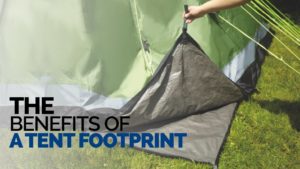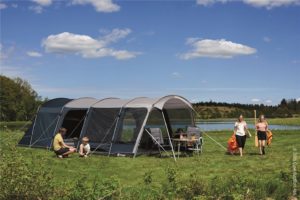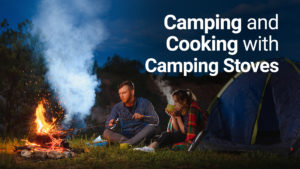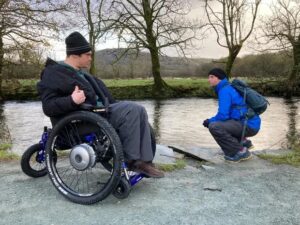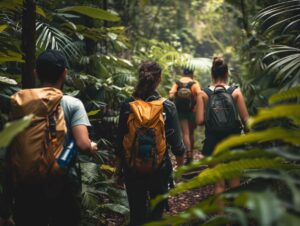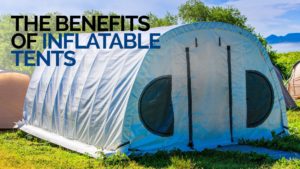

Vaibhav
- Categories: Advice
Are you considering a camping trip to high altitudes? While the stunning views and fresh mountain air can be enticing, there are some challenges you need to be prepared for.
From altitude sickness to extreme weather conditions, camping at high altitudes requires careful planning and preparation.
In this article, we will discuss the challenges of camping in high altitudes, how to prepare for it, and share some tips to ensure a safe and enjoyable camping experience.
So, let’s dive in and get ready for your next high-altitude adventure!
Key Takeaways:

- Altitude sickness, extreme weather, and limited oxygen are the main challenges of camping in high altitudes.
- To prepare, get in shape, acclimate to the altitude, pack appropriate gear, bring enough supplies, and plan for emergencies.
- When camping in high altitudes, take it slow, stay hydrated, dress in layers, protect against sun exposure, watch out for altitude sickness symptoms, and maintain a positive attitude.
How To Prepare For Camping In High Altitudes?
Effective preparation plays a crucial role in the success of a high-altitude camping expedition. This necessitates a focus on physical fitness, acclimatization strategies, careful selection of appropriate gear, and thorough planning for potential emergencies.
Whether the destination is the Rocky Mountain National Park or the Glacier National Park, possessing an understanding of the preparation process can yield significant benefits.
1. Get In Shape
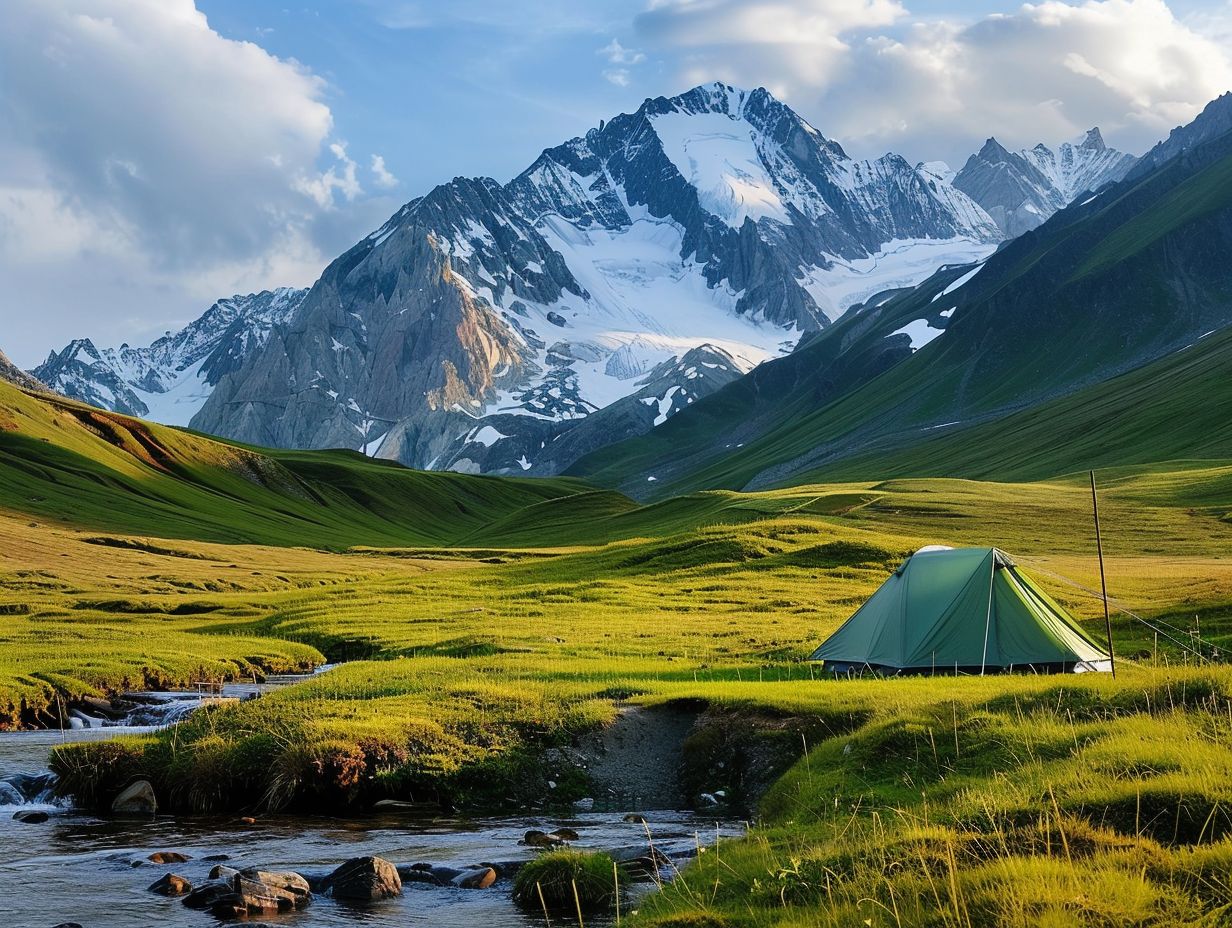
Proper conditioning is imperative for individuals engaging in high-altitude camping, as the diminished oxygen levels at elevated heights can exert added stress on one’s physical well-being. To adequately prepare for the rigorous physical demands associated with high-altitude trekking, it is vital to concentrate on enhancing both cardiovascular endurance and muscular strength.
Noted authorities such as Gaby Pilson emphasise the significance of integrating activities such as hiking with a weighted rucksack, stair climbing, and running into one’s fitness regime to bolster cardiovascular stamina.
Furthermore, Pilson advocates for the inclusion of strength training exercises targeting key muscle groups like squats, lunges, and core exercises to fortify overall body strength and stability.
By adhering to a comprehensive training programme that encompasses both cardiovascular and strength-building routines, individuals can cultivate the requisite physical fortitude required for arduous high-altitude excursions.
2. Acclimatise To The Altitude
Proper acclimatisation to higher altitudes prior to embarking on a trip can significantly reduce the risk of altitude sickness and enhance the overall experience. A recommended approach for acclimatisation involves spending time at intermediate elevations, such as Denver, to allow the body to adapt to higher altitudes gradually.
By ascending to elevated locations in a measured manner rather than rapidly gaining altitude, individuals provide their bodies with the opportunity to acclimate to the changes in oxygen levels. Moreover, it is essential to be vigilant for early signs of altitude sickness, including headaches, nausea, and fatigue.
Timely recognition of these symptoms enables appropriate intervention to be administered promptly, thereby averting the development of more serious complications.
3. Pack Appropriate Gear
Proper preparation with the necessary equipment is imperative to ensure a safe and comfortable high-altitude camping experience. The Terra Nova Quasar tent, renowned for its robust construction and capability to withstand adverse weather conditions, plays a pivotal role in your gear selection.
This tent offers protection against strong winds and low temperatures, providing a secure shelter for your nights spent in the mountains.
Along with the tent, it is crucial to have appropriate warm clothing layers, such as insulated jackets, hats, and gloves, to keep you adequately insulated and comfortable in cold conditions. Thermal socks are essential for maintaining warmth and dryness in your feet, thus preventing frostbite and discomfort.
Furthermore, a dependable propane stove is essential for facilitating the preparation of warm meals and ensuring sustained fuel availability throughout your high-altitude camping adventure.
4. Bring Enough Food And Water
It is essential to ensure adequate food and water intake when engaging in high-altitude camping to sustain energy levels and promote hydration.
Camping at high altitudes can lead to a significant increase in calorie requirements, necessitating the selection of high-calorie, nutrient-rich food options such as nuts, trail mix, energy bars, and dehydrated meals. These choices offer a rapid energy boost without causing a heavy feeling.
Prioritising easily digestible food items like dried fruits, crackers, and jerky can assist in minimising digestive discomfort often encountered at elevated altitudes. Along with solid foods, maintaining proper hydration is critical.
Consuming electrolyte beverages such as Gatorade can help in replenishing electrolytes depleted through perspiration and supporting hydration in environments of high altitudes where fluid loss is accelerated.
5. Plan For Emergencies
Preparing for emergencies is a crucial component of high-altitude camping to ensure safety in unforeseen circumstances. It is imperative to possess a well-stocked first-aid kit containing essentials like bandages, antiseptic wipes, painkillers, and a first-aid manual. Familiarising oneself with the nearest medical facilities’ locations can prove invaluable during a medical crisis.
Proficiency in operating emergency communication devices such as satellite phones or emergency beacons can expedite rescue operations.
Experts like Gaby Pilson emphasise the significance of acquainting oneself with these tools before embarking on a high-altitude expedition. Reputable organisations like IMAX and IOC recommend carrying emergency supplies and being prepared for any eventuality.
What Are The Tips For Camping In High Altitudes?
Camping at high altitudes requires the consideration of specific guidelines to ensure safety and enhance the overall experience. Implementing practical strategies such as monitoring pacing, maintaining proper hydration levels, and adhering to sun protection measures can significantly improve the quality of the expedition while concurrently mitigating the risks associated with altitude-related challenges.
1. Take It Slow
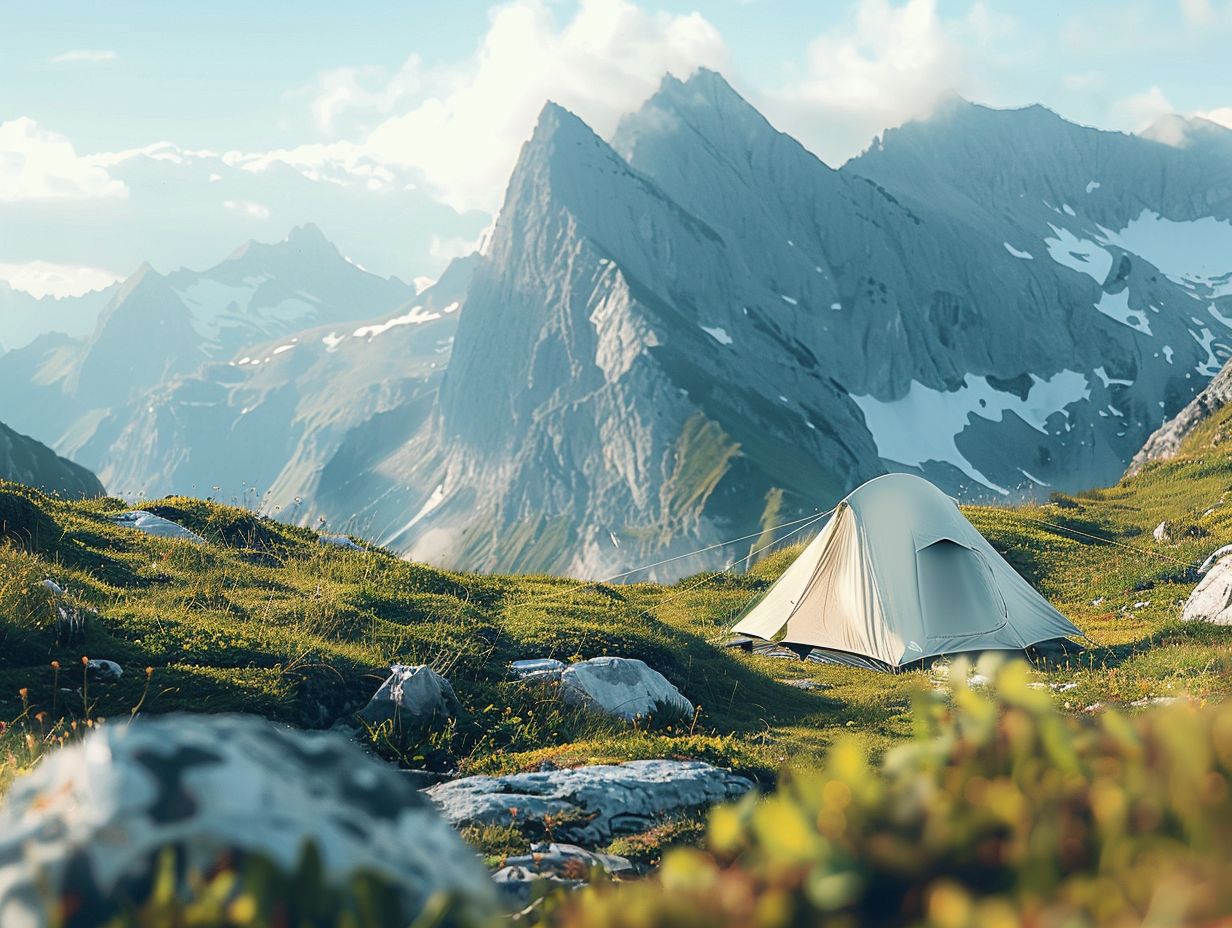
It is imperative to exercise caution and prudence when engaging in hiking and camping activities at high altitudes in order to mitigate the risk of overexertion and minimise the likelihood of altitude sickness.
When traversing through elevated terrains, it is essential to attentively heed the signals emanating from your body and adjust your pace accordingly. It is essential to acknowledge that your body necessitates adequate time to acclimatise to the alterations in oxygen levels; thus, taking regular intervals is pivotal.
By moderating your pace and gradually ascending and descending, you afford your muscles and respiratory system the opportunity to acclimatise to the diminished air density, thereby augmenting your overall hiking experience.
Ensuring proper hydration and nutrition assumes a critical role in counteracting altitude-induced adversities, allowing you to fully immerse yourself in the awe-inspiring vistas and tranquillity offered by mountainous landscapes.
2. Stay Hydrated
Maintaining adequate hydration is essential when camping at elevated altitudes, where the atmosphere tends to be drier, leading to expedited dehydration.
Consuming ample water throughout the day serves to restore the fluids lost due to perspiration and respiration in the parched mountainous environment.
Inclusion of electrolyte-infused beverages such as Gatorade can prove advantageous in sustaining proper hydration levels and replenishing critical minerals.
Electrolytes assume a pivotal role in regulating muscle functionality and nerve transmissions, thereby holding particular significance when partaking in physical exertions at high elevations.
It is imperative to imbibe water at regular intervals, especially when engaging in exploration or strenuous hikes, to forestall dehydration and ensure the full appreciation of the magnificent landscapes surrounding you.
3. Dress In Layers
Wearing layers of clothing is essential for effectively managing the fluctuating temperatures commonly experienced at high altitudes, particularly in cold weather conditions.
Layering clothing serves the dual purpose of providing insulation and the flexibility to adjust one’s attire in response to changing weather patterns.
By incorporating thermal gloves and socks into the attire, individuals can effectively conserve heat in critical areas where blood vessels are closer to the skin’s surface, such as the hands and feet. This additional warmth plays a crucial role in ensuring comfort and safeguarding against frostbite in severe, icy environments.
The process of adjusting layers plays a pivotal role in regulating the body’s temperature by allowing individuals to add or remove clothing items as necessary throughout the day. This adaptive approach guarantees that one remains warm without risking overheating, thereby ensuring both comfort and safety during high-altitude excursions.
4. Protect Against Sun Exposure
Protection against sun exposure is crucial when at high altitudes, as the thinner atmosphere provides reduced defence against ultraviolet (UV) radiation.
It is imperative to regularly apply sunscreen with a high Sun Protection Factor (SPF) to protect the skin from harmful UV rays that can cause sunburn, premature ageing, and skin cancer.
Additionally, wearing UV-protective clothing can help mitigate sunburn and prevent long-term skin damage by blocking out the sun’s intense rays. Investing in high-quality sunglasses that offer UV protection is essential for safeguarding the eyes against UV-related harm, such as cataracts and macular degeneration.
By incorporating these sun-safe practices, individuals can enjoy their time outdoors while safeguarding their skin and eyes from the detrimental effects of the sun.
5. Watch Out For Altitude Sickness Symptoms
Vigilance in monitoring symptoms of altitude sickness is imperative to ensure the well-being and safety of individuals partaking in high-altitude camping excursions.
Symptoms of altitude sickness encompass manifestations such as headaches, nausea, fatigue, and breathlessness. Early recognition of these indicators is paramount considering their potential progression to more severe conditions like high altitude pulmonary oedema (HAPE) or high altitude cerebral oedema (HACE).
Employing proper acclimatization strategies, such as gradual ascent and adequate hydration, can effectively mitigate the likelihood of encountering altitude sickness. In certain instances, medications like Diamox may be prescribed to alleviate symptoms and facilitate the acclimatization process.
6. Keep A Positive Attitude
It is crucial to maintain a positive attitude to enhance the experience of high-altitude camping and effectively navigate challenges. Sustaining mental resilience is essential for confronting the unpredictable natural elements encountered during high-altitude trekking.
Gaby Pilson, a seasoned guide, emphasises that a positive mindset not only boosts morale but also strengthens the capacity to adjust to changing circumstances. In times of adversity, focusing attention on the beauty of the surroundings and drawing upon personal strength can lift spirits and drive progress.
Cultivating gratitude for each moment and deriving happiness from small achievements can make the expedition truly memorable.
Frequently Asked Questions

What are some essential tips for camping in high altitudes?
Some essential tips for camping in high altitudes include acclimating to the altitude, staying hydrated, dressing in layers, setting up camp in a sheltered area, and being prepared for sudden changes in weather conditions.
How can I acclimate to the high altitude before camping?
To acclimate to the high altitude before camping, it is recommended to arrive a day or two early and spend some time at a lower altitude to allow your body to adjust. You can also take it easy and avoid strenuous activities for the first few days of your camping trip.
What should I pack for a high altitude camping trip?
When packing for a high altitude camping trip, it is important to bring plenty of warm, waterproof clothing, a good quality tent, a sleeping pad and bag rated for colder temperatures, and high energy, non-perishable foods. Don’t forget to also pack sunscreen and sunglasses to protect yourself from the strong UV rays at higher elevations.
How can I stay hydrated during a high altitude camping trip?
Staying hydrated during a high altitude camping trip is crucial as the air is much drier and you lose more moisture through your breath. Be sure to drink plenty of water throughout the day and bring electrolyte-rich drinks or food to replenish lost minerals.
What should I do if I experience altitude sickness while camping?
If you experience symptoms of altitude sickness, such as headaches, dizziness, nausea, or shortness of breath, it is important to descend to a lower altitude immediately. Rest, hydrate, and seek medical attention if symptoms persist.
Are there any safety precautions I should take while camping in high altitudes?
Yes, there are several safety precautions you should take while camping in high altitudes. These include being aware of weather conditions, avoiding camping near steep drop-offs or areas prone to avalanches, and having a plan for emergency situations. It is also recommended to camp with a partner or group for added safety.
Share:
By submitting your email address, you are agreeing to receive marketing emails from theexpertcamper.co.uk.
We’ll never share your email address and you can unsubscribe at any time. Privacy policy
Related Posts

A Seasonal Guide To Hiking In The Peak District
Are you ready to lace up your hiking boots and explore the stunning landscapes of the Peak District? This seasonal guide will take you through
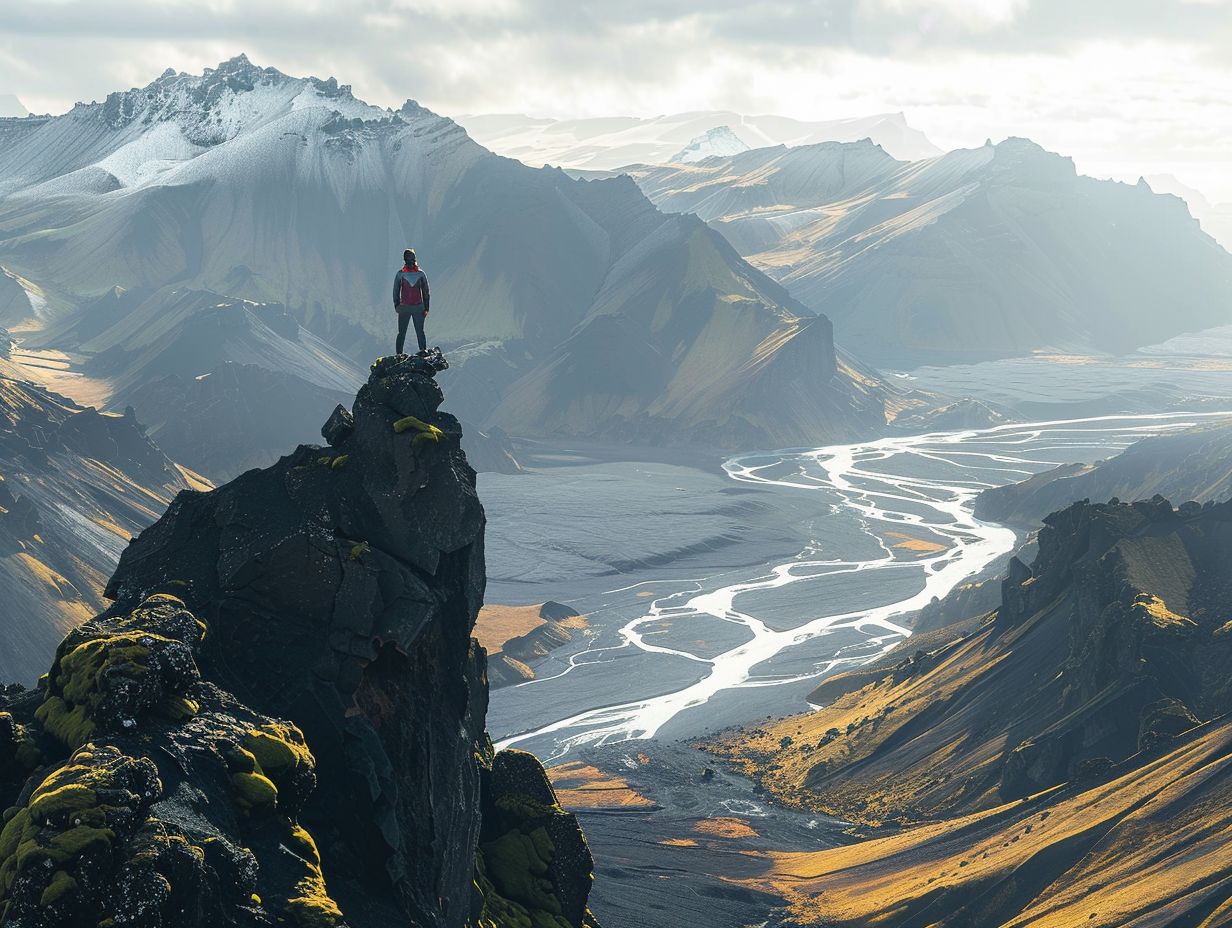
Hiking Challenges Preparing For Your First Ultrahike
Are you ready to take your hiking adventures to the next level? Ultra-hiking offers a unique combination of physical and mental challenges, breathtaking scenery, and
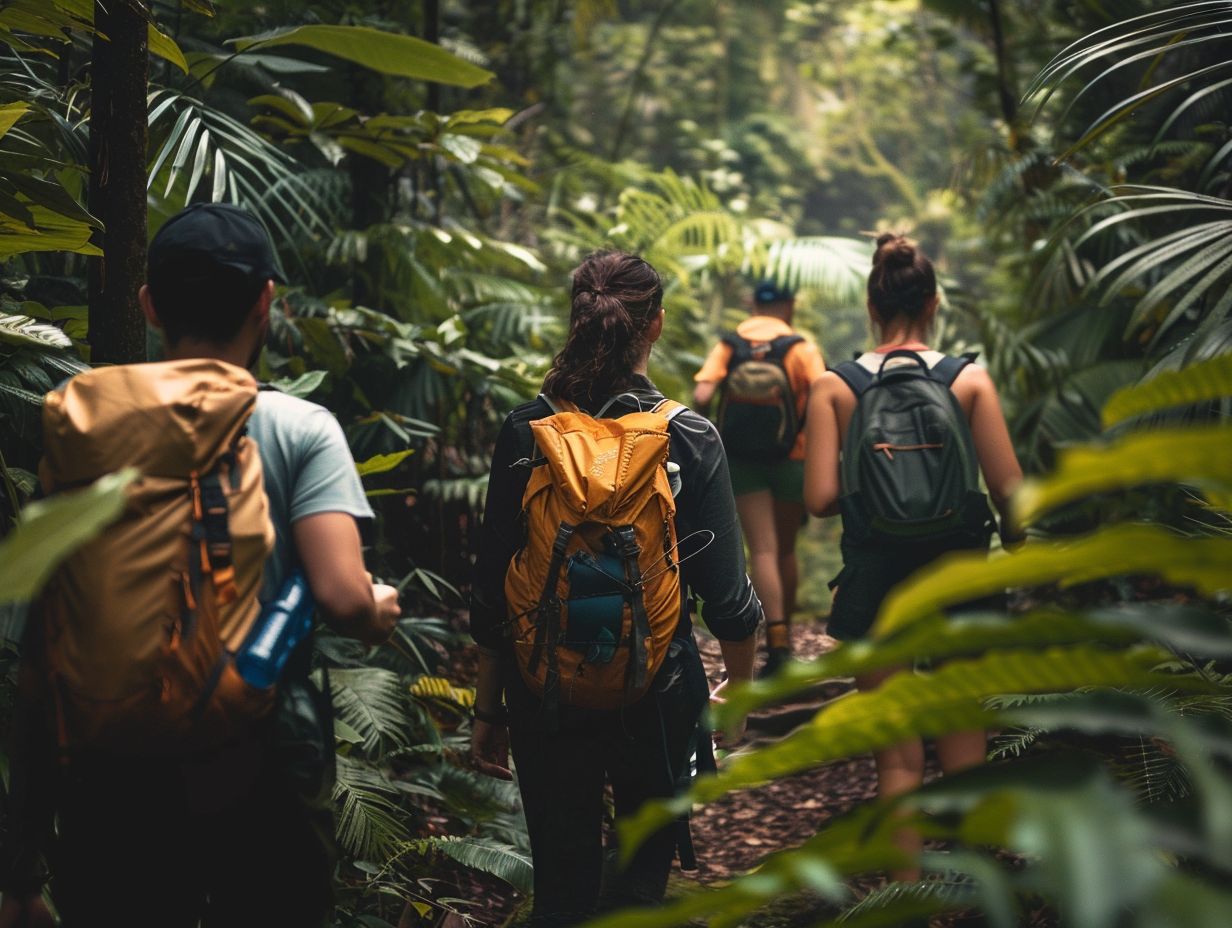
Ecofriendly Hiking Tips For Sustainable Adventures
Are you an outdoor enthusiast looking to minimise your impact on the environment while enjoying the great outdoors? Eco-friendly hiking is the perfect solution! We
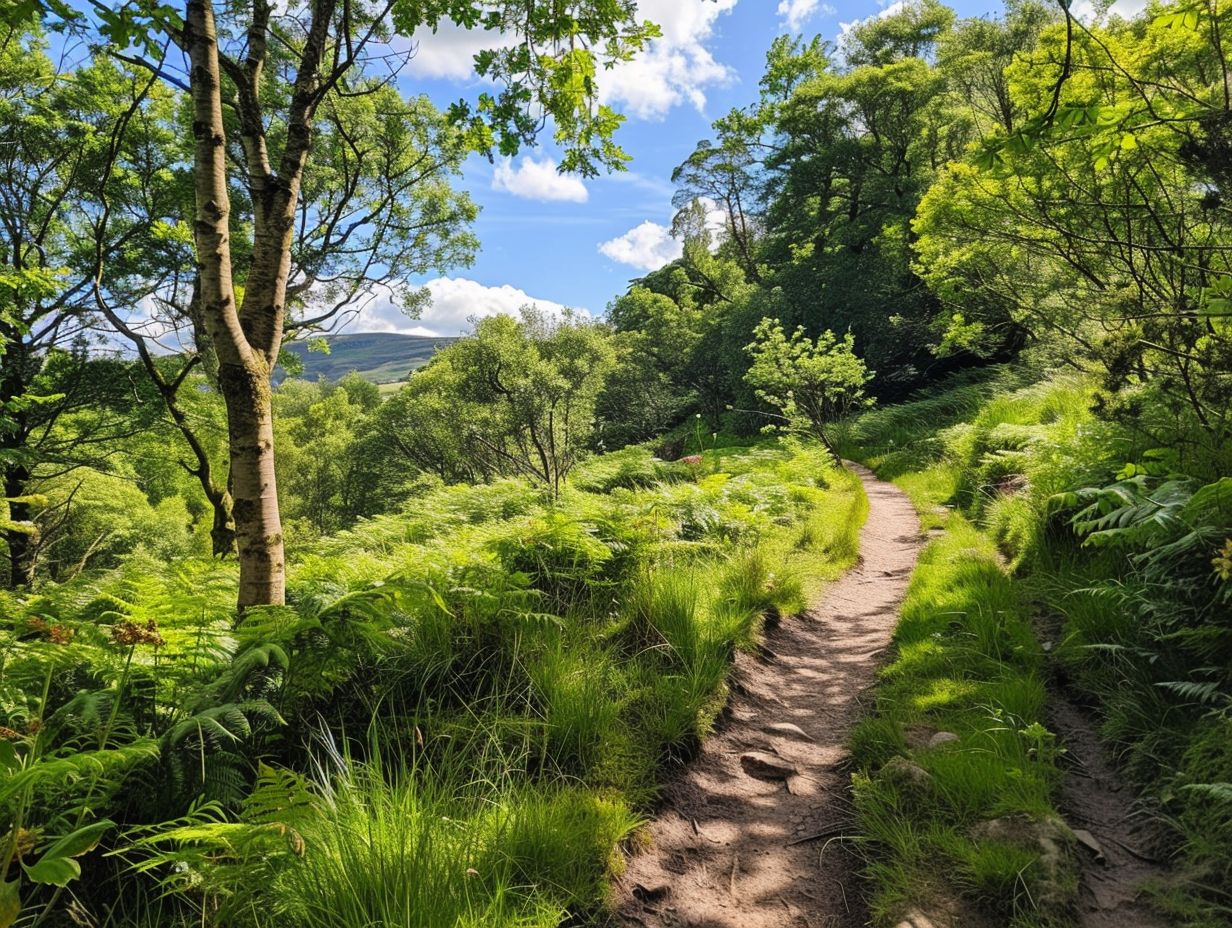
The Best Hiking Trails For Experiencing UK Wildlife
When exploring the picturesque hiking trails of the UK, you can expect to encounter a diverse array of wildlife. From majestic birds soaring overhead to

Wildflower Walks The Best Trails For Nature Lovers
Are you a nature lover looking to embark on a wildflower walk? Explore the best trails for wildflower walks, including [Trail Name 1], [Trail Name



